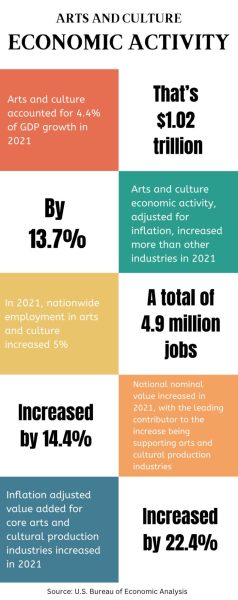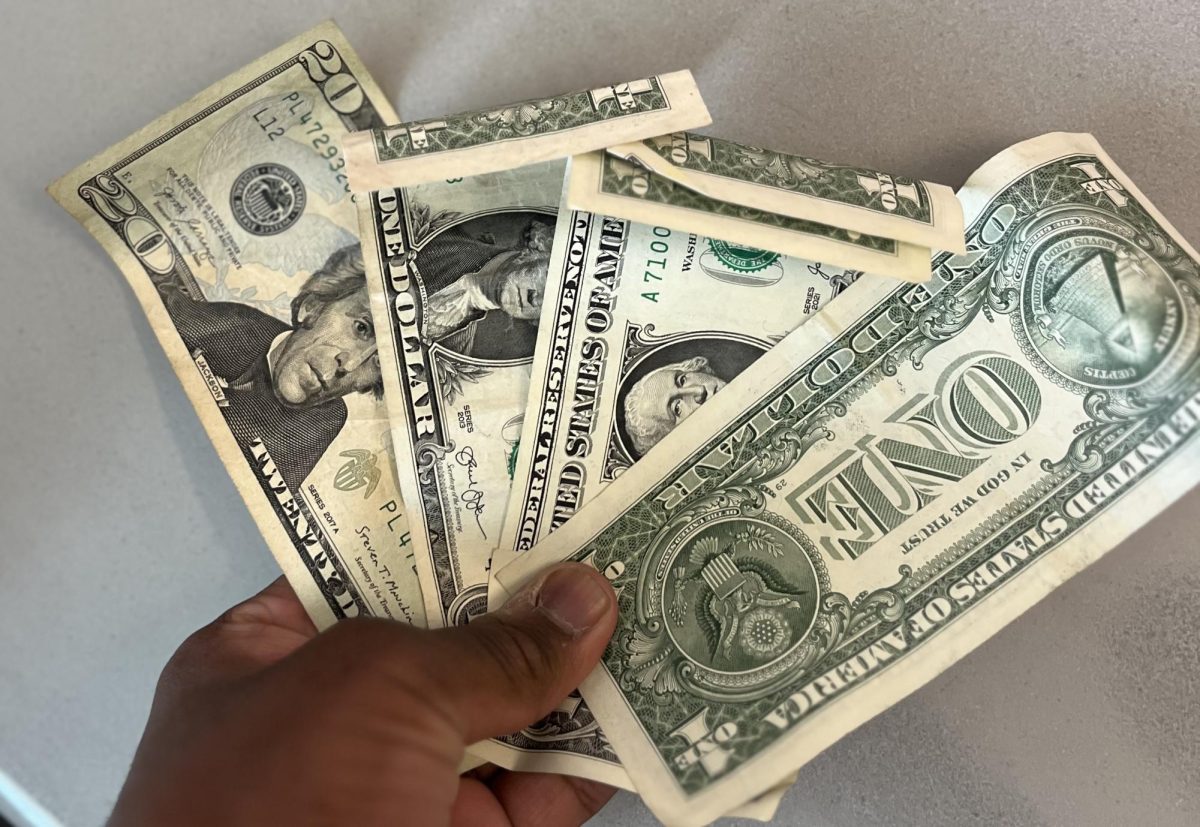“Art is the signature of civilization.”
– Beverly Sills
According to U.S. News & World Report, Carnegie Vanguard High School is ranked #5 in Texas high schools, #12 in magnet high schools, and #35 in national rankings. Academia thrives on our campus, surrounding us around the clock for eight hours of our day. Conversations are dominated by talk of nervously anticipated physics tests, calculus quizzes, and the SAT or ACT. For most students, the arts are the last thing on their minds.
In my four years at CVHS, I’ve noticed the unique academic culture that our community has cultivated. STEM careers are held on a pedestal higher than God himself; engineering and biology are worshiped as deities. I have witnessed my peers cringe at the idea of a liberal arts major.
As an artist at CVHS, I’ve been conditioned to view artistic studies and careers as thoughtless and foolish — silly, as some may say. During the fall of my senior year, I had to make a difficult decision. Do I choose my passion, or a ‘wiser,’ ‘safer,’ career? I chose the former.
And now, I am writing this article in defense of artistic careers. The arts are an everlasting necessity for any functioning society. Art is needed to promote innovation, it has a lasting influence on other industries, and it nurtures education and critical thinking. Overall, artistic careers are valuable and worth it.
1. Art promotes innovation
Art has accompanied humanity since the very beginning. From carved bones and cave paintings to holograms and animation, art has been used in our society as a form of expression, communication, and documentation of our rich history. Imagine all the artistic pieces you have witnessed that have had a personal impact on your life. These works preserve life and culture in its purest form. Centuries from now, pieces that are being created at this very moment will be analyzed by future leaders and academics. With the documentation that art provides, we as a society can admire our past as well as learn and grow from it.
Throughout history, art has time and time again been utilized to mobilize our society and implement social change. Propaganda is one of the most obvious examples of this. “Chairman Mao En Route to Anyuan” is one of the most well-known propaganda pieces in world history. This painting was one of the many artworks used to incite the Cultural Revolution. This piece, and millions of others like it, have shaped our world into what we know today.

2. Art influences other industries
Art is a form of communication that goes beyond the constraints of spoken or written language. With its remarkable ability to convey emotions, tell stories, and reflect ideas, art encourages dialogue. In this, it sparks conversations that resonate across cultures and societies. From the Last Supper by da Vinci to West Side Story by Arthur Laurents, art is and always will be a vessel for cultural exchange, filling the gap between communities. In essence, art acts as a universal bridge.
Because art is, at its core, so innate to the human experience, it holds influence over almost every aspect of our lives and other industries. You can find art anywhere you look: video games, architecture, advertising, etc. Art is a constant companion in the ever-growing industries of our economy.
Additionally, art can lead to seriously impactful breakthroughs in other fields. There is a reason why many medical schools require soon-to-be doctors to take art and art history classes. Art has contributed to some of the greatest minds this world has ever seen’s understanding of society and innovation. Many technologies that we use in our everyday lives have been inspired by art. For example, Steve Jobs, co-founder of Apple, drew on his appreciation for calligraphy and design to create user-friendly interfaces for Apple products. His focus on aesthetics and user experiences revolutionized the technology industry. Every day, art allows us to advance as a collective and grow various industries.
3. Art nurtures education and critical thinking
By engaging with various forms of artistic expression, individuals are not merely exposed to aesthetic experiences but are actively involved in processes that contribute to intellectual, emotional, and social growth. This nurtures one’s education and promotes critical thinking.
Through the study of art, individuals learn to observe, analyze, and interpret information – particularly visual information. This promotion of observational skills extends to almost all academic disciplines. These students will be more likely to develop interdisciplinary thinking as their ability to make connections is strengthened.
All of this is proven by the fact that art has been shown to improve children’s learning. In the years when a child’s development is most crucial and they are a sponge soaking in the world around them, it is imperative that what they are learning in school is engaging and easy for them to follow. Arts integration lessons create enthusiasm in the classroom, make difficult concepts easier to understand, and are more inclusive for diverse kinds of learners. With arts present in the world of education, great minds are born.
“Just because my dreams are different than yours doesn’t mean they’re unimportant.”
– Meg March, Little Women
The prevailing academic culture at CVHS has prompted me to critically reflect on the importance of arts in our world and my passion for them. As an advocate for artistic careers, I’ve underscored the enduring necessity of art in our society. We must recognize the diversity of dreams and value the unique contributions art makes to the tapestry of our civilization. As we navigate an ever-evolving world, let us find the profound impact of art on our individual growth, societal progress, and the enrichment of the human experience.








